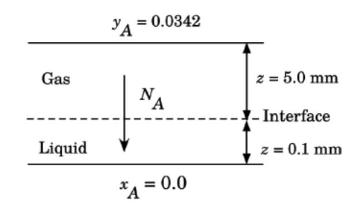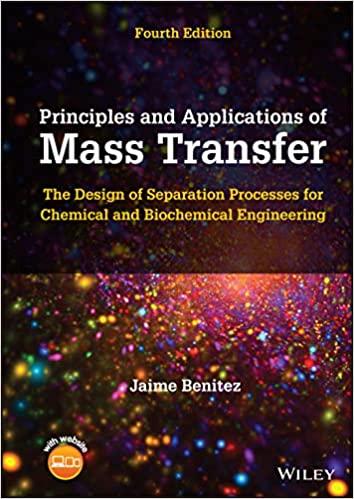Ammonia, (mathrm{NH}_{3}), is being selectively removed from an air (-mathrm{NH}_{3}) mixture by absorption into water. In this
Question:
Ammonia, \(\mathrm{NH}_{3}\), is being selectively removed from an air \(-\mathrm{NH}_{3}\) mixture by absorption into water. In this steady-state process, ammonia is transferred by molecular diffusion through a stagnant gas layer \(5 \mathrm{~mm}\) thick and then through a stagnant water layer \(0.1 \mathrm{~mm}\) thick. The concentration of ammonia at the outer boundary of the gas layer is \(3.42 \mathrm{~mol} \%\) and the concentration at the lower boundary of the water layer is essentially zero.
The temperature of the system is \(288 \mathrm{~K}\), and the total pressure is \(1 \mathrm{~atm}\). The diffusivity of ammonia in air under these conditions is \(0.215 \mathrm{~cm}^{2} / \mathrm{s}\) and in liquid water is \(1.77 \times 10^{-5} \mathrm{~cm}^{2} / \mathrm{s}\). Neglecting water evaporation, determine the rate of diffusion of ammonia, in \(\mathrm{kg} / \mathrm{m}^{2}-\mathrm{h}\). Assume that the gas and liquid are in equilibrium at the interface.
The equilibrium data for ammonia over very dilute aqueous solution at \(288 \mathrm{~K}\) and \(1 \mathrm{~atm}\) can be represented by (Welty et al., 1984)


Step by Step Answer:






